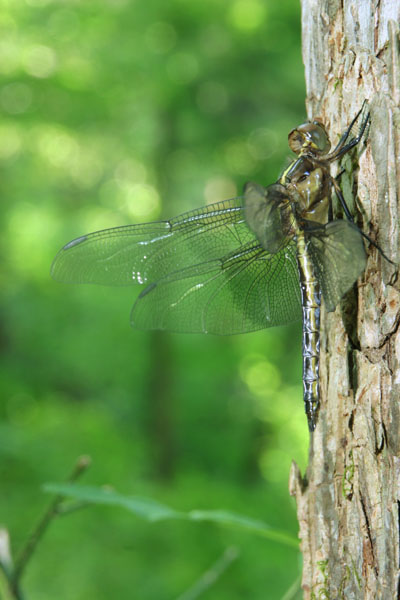 So this morning I was checking out a new area for nature photography near me, supposedly before the day got too hot (I was wrong.) I wasn’t in search of any particular subject matter, just whatever opportunities arose. When I stumbled across (well, not literally) a dragonfly perched low on a tree trunk right alongside the path, wings still not dried from its new molt and transformation from larval stage, I sat down and start taking photos of it. For forty five minutes.
So this morning I was checking out a new area for nature photography near me, supposedly before the day got too hot (I was wrong.) I wasn’t in search of any particular subject matter, just whatever opportunities arose. When I stumbled across (well, not literally) a dragonfly perched low on a tree trunk right alongside the path, wings still not dried from its new molt and transformation from larval stage, I sat down and start taking photos of it. For forty five minutes.
Many normal people might say, “Forty five minutes? On one dragonfly?” while nature photographers (and their long-suffering significant others) will shrug and say, “That sounds about right.” When you come across an interesting subject, especially one illustrating some trait or behavior most people don’t get to see, you make sure you get plenty of decent frames, and you explore the possibilities of angles, lighting, background, and so on. You may wait, patiently, for the behavior to unfold or the conditions to change favorably. Part of my time was spent anticipating the sun breaking through the leaves to fall onto my subject, bringing out a little more color and lowering the contrast between the sunny background and the dragonfly, until then in shadow. I also got out the strobe unit and experimented with lighting levels that looked relatively natural, and angles that brought out the best facets from the wings – which, as I watched, slowly extended from vertical to horizontal, over the course of perhaps twenty minutes; I could see the tips twitching from the fluid being pumped into them.
Even though I was traveling with the “light” kit, I was prepared, having with me the tripod, macro extensions, strobe, off-camera cord, and IR remote release. These let me do detailed closeups with a high depth-of-field and balanced lighting, with the tripod and remote allowing me to use exposures up to three seconds without worrying about camera shake. Yes, it is frequently a pain to be carrying all of this stuff, even though I often carry more. But there’s no substitute for much of this, and handholding the camera isn’t an option for most macro work and at least half of the high DOF shots, even with pushing the ISO way up. Not to mention, the higher the ISO goes, the lower the quality of the image. The rule is, if you don’t have the stuff you need, you don’t get the shots, and for subjects like mine here, that’s an opportunity wasted that I have no idea when I’d come across again (and if I was once again traveling too light, I’d miss it then, too.)
So carry whatever you can, realizing that without certain types of equipment, you can’t capture certain kinds of photos – you have to judge on your own what you want to carry versus what you can afford to miss. And don’t let yourself be influenced by people remarking about how much shit you bring along, or how long it’s taking you to get “a picture.” But yeah, nature photographers travel alone for a good reason, often enough ;-)
I also did a number of frames to play around with high dynamic range (HDR) photography, which I’ll talk about in a later post.





















































No, it doesn’t seem weird. :-)
But sometimes the failures are more interesting than the successes –